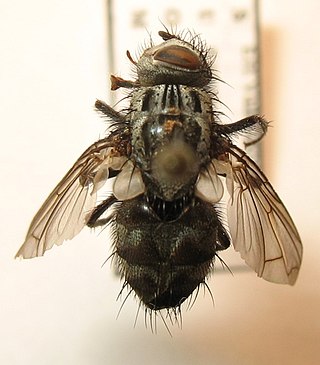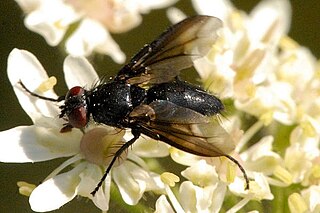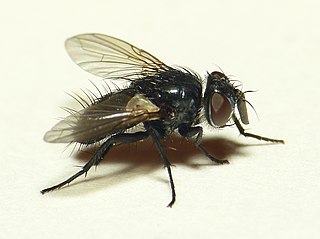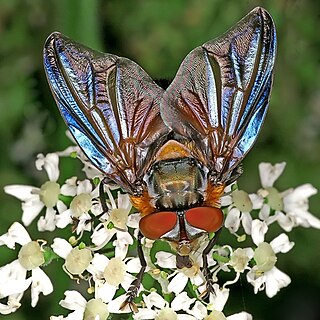
Admontia is a genus of flies in the family Tachinidae.

Allophorocera is a genus of flies in the family Tachinidae.

Billaea is a genus of flies in the family Tachinidae. Most larvae, where known are parasitoids of Coleoptera or Lepidoptera (Pyralidae)
Cyrtophloeba is a genus of flies in the family Tachinidae.
Erythrocera is a genus of flies in the family Tachinidae.

Nilea is a genus of flies in the family Tachinidae.
Prosheliomyia is a genus of bristle flies in the family Tachinidae.
Sturmiopsis is a genus of flies in the family Tachinidae.
Uclesia is a genus of flies in the family Tachinidae.
Kuwanimyia is a genus of flies in the family Tachinidae.
Lixophaga is a genus of flies in the family Tachinidae.

Lydella is a genus of flies in the family Tachinidae. Lydella thompsoni can be used in the UK for the biological control of the European corn borer.

Voriini is a tribe of flies in the family Tachinidae. More junior homonyms exist of Wagneria than any other animal genus name.

Dexiinae is a subfamily of flies in the family Tachinidae.

Exoristinae is a subfamily of flies in the family Tachinidae. Most species are parasitoids of caterpillars.

Blondeliini is a tribe of parasitic flies in the family Tachinidae. Larvae are parasitoids of other insects, mostly beetles and caterpillars. Although nearly cosmopolitan, its greatest diversity is in the New World and especially in South America.

Eryciini is a tribe of flies in the family Tachinidae.

Exoristini is a tribe of flies in the family Tachinidae.

Goniini is a tribe of parasitic flies in the family Tachinidae. Members of Goniini are distinguished from other Tachinidae by laying small "microtype" eggs that hatch only after being ingested by a host.

Phasiinae is a subfamily of flies in the family Tachinidae. Except for the small tribe Strongygastrini members of this subfamily attack only Heteroptera.











